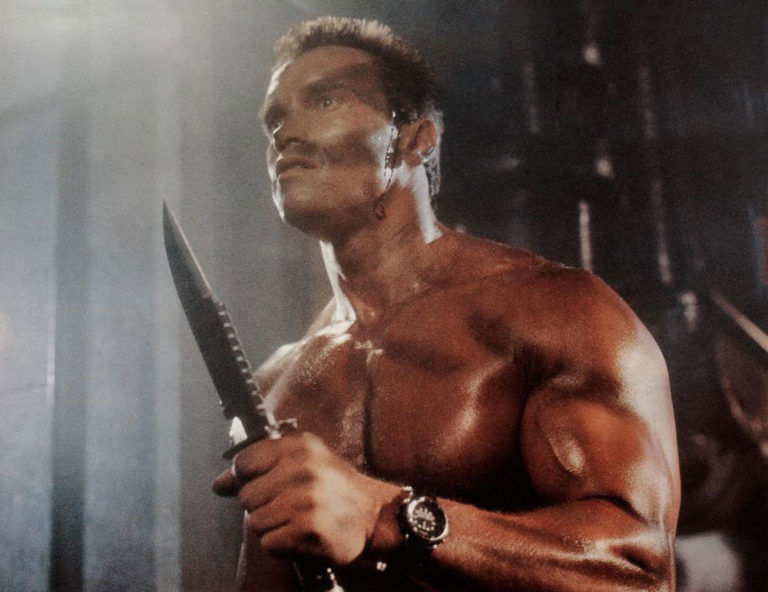
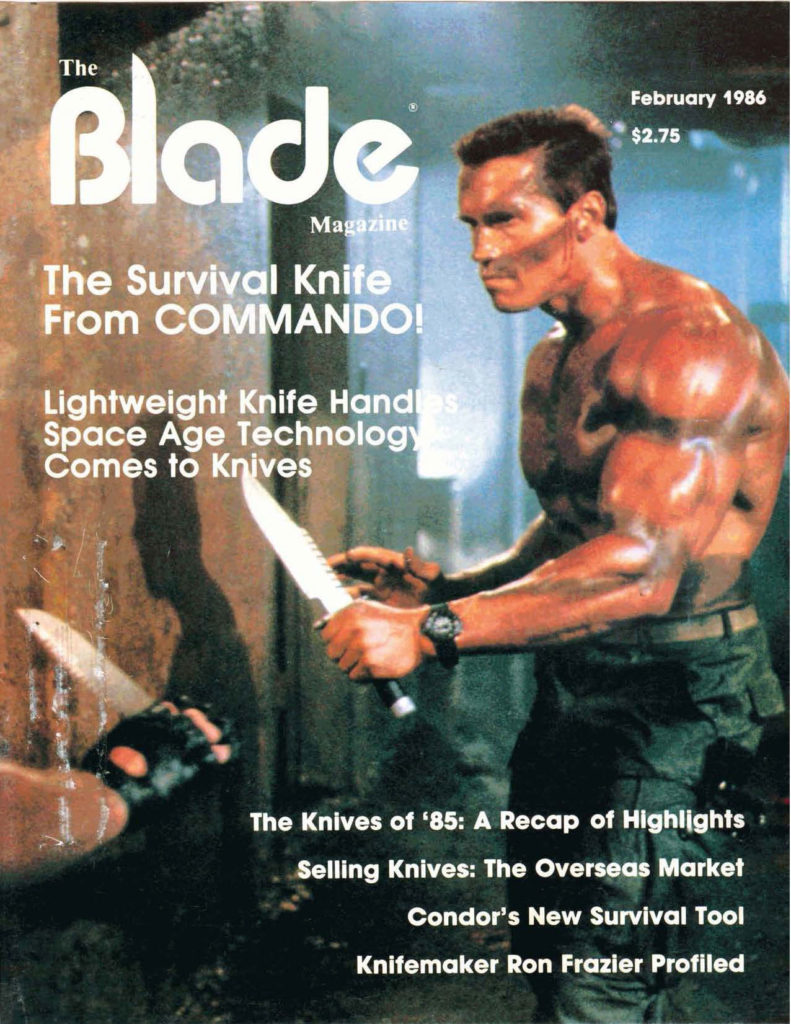
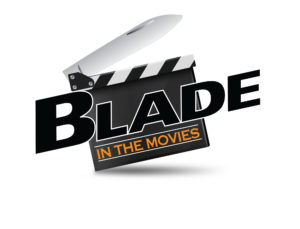 Editor’s note: The following originally appeared in the February 1986 issue of BLADE magazine. Read more from BLADE‘s archives in this collection.
Editor’s note: The following originally appeared in the February 1986 issue of BLADE magazine. Read more from BLADE‘s archives in this collection.
Jack Crain passed away in September 2016 at the age of 70. He’s best remembered for the knives he supplied for many Hollywood movies, including Commando, Predator, Road House, Predator 2, Demolition Man and Executive Decision.
However, it was Commando that solidified Crain’s reputation as a knifemaker to Hollywood. Here is the complete article about his work for that action film.
Hollywood Loves Custom Knives
Hollywood is sold on the custom knife, and knifemaker Jack W. Crain of Weatherford, Texas, has reason to be pleased.
Why? Because one of Crain’s knives has recently “co-starred” in a Hollywood production. The knife, a model Crain calls the “Life Support System I,” was recently featured in the popular motion picture Commando starring Arnold Schwarzenegger.
The knife also appeared in the Airwolf television series, and later this season it will appear in an episode of The Fall Guy.
Knives on Silver Screens Inspire Knifemakers

Indirectly, explains Crain, the relationship between Hollywood and the custom knife began about three decades ago with the motion picture The Iron Mistress. That film, a romanticized biography of James Bowie starring Alan Ladd, had a tremendous impact on the early custom knife industry. Knife collecting became more popular, and several of today’s prominent makers readily concede that their careers were launched by that movie.
Crain was building knives before he ever saw the film.
“I can’t remember a time when I wasn’t making knives,” he states. But he admits to having watched The Iron Mistress “several hundred times.”
And since he prefers to make Bowie knives over all other styles, he assumes that the movie influenced his career as well.
Occasionally a knife will surface which purports to be the Bowie knife used by Alan Ladd in The Iron Mistress. Of course, it will be accompanied by a formidable price tag. Crain admonishes would-be investors that these knives are almost certainly fakes.
All of the Bowies from The Iron Mistress are in a private collection, and they are not likely to be sold in that collector’s lifetime.
The Renaissance
Handmade knives flourished in the years following The Iron Mistress and Jack Crain was part of the ensuing Renaissance of custom cutlery. He sold his first knife in 1969. A decade later he became a full-time maker and joined the Knifemakers Guild.
Initially, Crain forged his blades. Later, he adopted the stock-removal method. He occasionally returns to the forge to make a damascus blade.
He has produced folders and hunters and fancy daggers, but Bowie knives remain Crain’s primary interest. His fellow knifemakers have cautioned him that the popularity of the Bowie is waning.
“Perhaps they can’t sell Bowie knives, and perhaps I couldn’t sell the kinds of knives they are making,” declares Crain, “but I’m having no difficulty selling my Bowies.”
Limited edition commemorative Bowie knives have become Crain’s specialty, because they allow him to merge his talent for knifemaking with his passion for Texas history. In 1982, he introduced a 13-piece set in which each knife represented one of the 13 days of the heroic siege of the Alamo.
Then came a 20-piece series commemorating Isaac Millsap, one of the Alamo defenders. The Bowies for both sets were loosely patterned after the Bart Moore knife, which allegedly belonged to Jim Bowie.
A Bowie knife found on the San Jacinto battlefield (and currently on display at the Texas Ranger Hall of Fame in Waco) provided the design for the Captain Jack Hays series of 20 knives. Hays was a legendary Texas Ranger during the period when Texas was a Republic.
Another series commemorated Noah Smithwick, a blacksmith who fought in the Texas Revolution (and left a detailed account of his exploits). Smithwick actually made Bowie knives-Jim Bowie bought the first one-and the knives in this set replicated the only known Smithwick Bowie in existence.
Survival Knives Get Hot
In 1982, Hollywood released a motion picture whose impact on the custom knife industry rivaled, or surpassed, that of The Iron Mistress. That film was First Blood, and it showcased a handmade survival knife built by James B. Lile. Suddenly the market was flooded with both factory and custom knives featuring sawteeth and hollow handles.
Crain also felt the movie’s impact. He received numerous requests to produce his own version of a survival knife. Since such knives are essentially modified Bowies, the task would appear simple for a Bowie knifemaker. But Crain perceived some inherent challenges in those modifications. He would not replicate Lile’s design or any other pattern. Rather, he would incorporate his own notions of what a combat-survival knife should be.
The LS-1 is Born
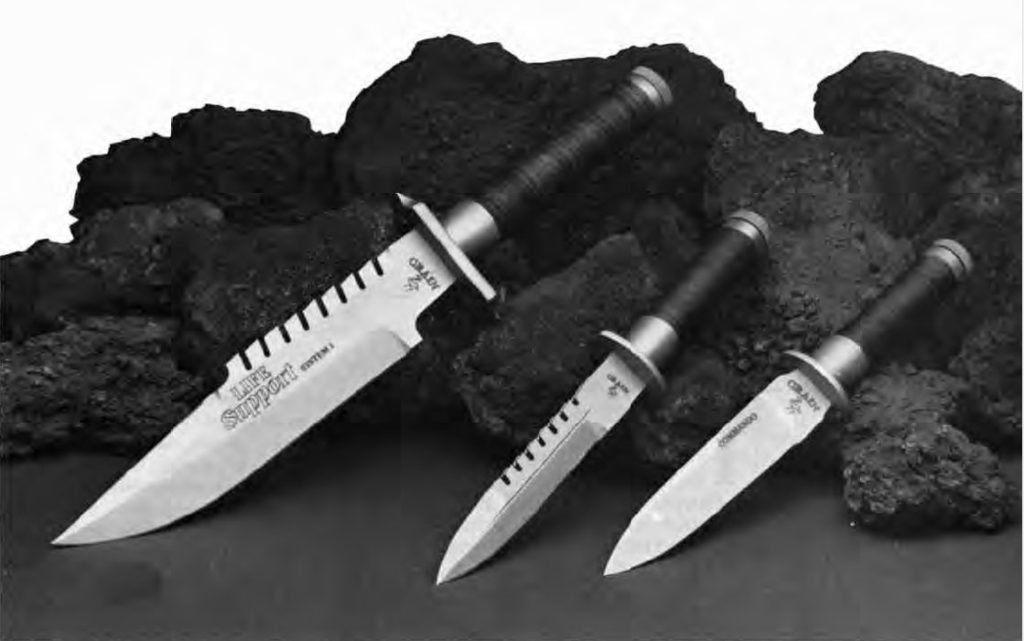
The end result was the Life Support System I, which featured a nine-inch by two-inch by 1/4-inch blade, flatground for strength. When this knife was introduced in 1982, Crain offered it with either a 440-C blade in a matte finish or a 1095 spring steel blade with a black finish.
However, Crain became dissatisfied with the quality of the 1095 and later substituted 01 steel on the black-finished knives. He has also added D-2 as an alternative steel for the knives with a matte finish.
A single row of sawteeth is standard on the LS-1. Crain says that, in general, a single row of teeth cuts better and binds less. However, he offers a double row of teeth as an option. The knife is also available with either a square or sharpened back instead of the sawteeth.
Another distinctive feature of the LS-1 is the cut-out at the choil. This indentation accommodates the index finger. This grip provides the knife’s user with better balance for close-up work or more leverage for difficult tasks. It also affords room for a two-handed grip.
In designing the LS-1, Crain recognized that a critical area was the junction of the blade to the handle. On many survival knives, the tang is a short, thin rattail which is merely epoxied or bolted into the handle. Thus, these knives are liable to break at the guard. Crain attempted to correct this problem by strengthening the tang and then welding it into the handle.
Quality Control
However, during strenuous testing he discovered that his blades were still vulnerable at the junction. Through his research, he learned that the airhardened 440 steel had actually been weakened by welding the blade after it had been heat-treated. He successfully resolved the problem by welding the blade into the handle first and then heat-treating the steel.
When Crain discovered the internal flaw, he had already sold a number of his Life Support knives. None of them had been broken and returned. However, he assumed the responsibility of recalling and replacing every knife he could locate. Some knives had changed hands and were lost; a few collectors had prototype knives and refused to return them.
The hollow handle of the LS-1 provided other problems. At first, Crain experimented with the same kind of tubing used on other survival knives. But he determined that the wall thickness of the tubing was too thin. He also discarded the notion of casting the handles (or any other parts of the knife). The alternative was to fabricate the handle out of a solid block of steel.
Because Crain does not possess a lathe or milling machine, he found it necessary to subcontract the production of the handles. They are manufactured to his exacting specifications. Otherwise, Crain performs all of the construction: from free-hand grinding of the blade, to hand-cutting of the sawteeth, to hand-fitting of the guard and handle.
The LS-1 Reaches Arnold Schwarzenegger and the Commando Movie
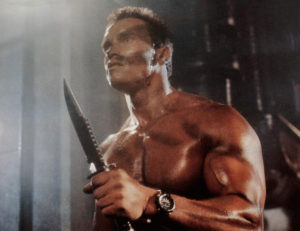
Crain’s agent took several Life Support knives to California. It was a model with a black finish that was “discovered” by Hollywood and featured in the Airwolf series.
In January of 1985, Crain’s agent was contacted by Tom Shaw, the propmaster of a soon-to-be-made motion picture which would be called Commando. The movie would star Arnold Schwarzenegger, who had used custom swords made by Jody Sampson in the Conan films. Shaw reported that Schwarzenegger had seen a Life Support knife. He liked it and wanted to include it in the movie.
“The thing that impressed me,” remembers Crain, “was that these people were trying to get actual working guns and knives-no dummy props.”
Crain was asked to supply three matte-finished Life Support knives and six scabbards for the production. (Schwarzenegger’s character, Col. John Matrix, only carries one LS-I; the extra knives and scabbards were required as back-up.) Then the movie folks requested that Crain design a “small and concealable stiletto-type” knife for Matrix to carry.
Crain complied by developing the Commando model. The single-edged, spear-point blade is flat-ground and measures six inches by one and one-quarter inches by three-sixteenths of an inch. It is affixed to a hollow handle by the same sturdy method as the LS-1.
Three Commando knives were sent to California. The film producers were delighted with the model, but they decided that Col. Matrix would carry two small knives instead of one, and they asked Crain for yet another pattern. Within the movie’s limited production schedule, there was simply no time for Crain to design and construct another new knife. However, he had previously been commissioned by a private company to develop a limited edition of 50 small “all-around survival knives” to be called Scorpion.
These knives featured a six-inch by one-inch by three-sixteenths-inch blade with a sharpened top edge and a double row of sawteeth. Crain secured permission for the Scorpion to be used in the movie, and serial numbers eight and nine were shipped to Hollywood.
Key Scenes from Commando
In the released version of the film, the Commando and Scorpion knives appear very briefly. Matrix jerks them from his scabbard and flings them simultaneously into two attacking “bad guys.”
The LS-1 is displayed much more prominently. Matrix carries it on the front of his combat vest throughout the second half of the movie and utilizes it in the final confrontation with his arch-nemesis, Bennett (portrayed by Vernon Wells).
Contrary to the film’s publicity, Crain did not make the D-guard combat knife carried by Bennett in the movie. That knife, explains Crain, was composed of a factory blade attached to the handle of a 1918 trench knife.
Crain’s Rules for Knives in Movies
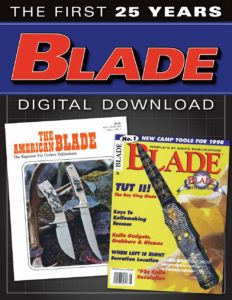
In fact, Crain will not permit one of his knives to be used by the villain in a film.
“Knives have a bad enough reputation,” he states. “People associate them with street gangs and psychopathic killers in the ‘slasher’ movies. I don’t want to see my knives doing that sort of thing.”
He stresses that knives are sometimes favored by the “good guys,” too.
Crain has another rule which applies whenever he is asked to design a knife for a movie. He requires creative input from the filmmakers, either the producer or director or the actor who will carry the knife.
“I had several pleasant conversations with the producer of Commando, Joel Silver,” states Crain.
“They treated us real well,” he recalls. “It was quite enjoyable working with them.” Crain adds that Twentieth-Century-Fox provided him with the movie’s press kits and forwarded all inquiries about the knives directly to him.
Crain thoroughly enjoyed watching Commando, noting that it was “fast-paced and fun.” However, he does not recommend that his customers try to emulate Matrix by throwing their Scorpion and Commando knives.
“Blades that are tempered hard enough to take a good edge are generally too brittle for throwing,” he observes.
Limited Supplies
He also notes that it would be extremely unlikely for anyone to find one of his LS-1 knives in an army surplus store, as Matrix did in the movie (above). To date, only about 80 have been made. None of Crain’s knives are mass produced.
He has no employees other than his wife, Toni, who answers the phone so her husband can get some work done in the shop.
“We’re not trying to make a whole lot of knives,” he explains, “just a few good ones.” (Crain also states, with justifiable pride, that Toni is rapidly developing into a talented engraver).
“Actually, the movie has slowed my production,” Crain reports. More people are writing and calling. Some of them want to come to his shop and select a knife from his stock. Crain politely informs them that he has no stock. Every knife is custom ordered and shipped upon completion.
Crain is pleased that Commando was a commercial success and that it has generated more interest in his work. However, he regrets the film’s timing.
“It would have been more convenient if the movie had come out last year-or next year,” he states.
He will have less time to devote to his survival knives in 1986, the year of the Texas Sesquicentennial, and Crain has been commissioned to make commemorative Bowies honoring several Texas cities, including Dallas, Fort Worth, and Houston.
Collecting Jack Crain Knives
The fact that Crain’s knives have become “movie stars” has not affected their price. The Life Support System I still costs $450 (in 1986 prices). The Commando sells for $300.00 (in 1986 prices).
However, Crain has introduced a special limited edition set containing both the LS-1 and the Commando. The series, restricted to 50 numbered sets, sells for $1,500. Sets have been presented to Arnold Schwarzenegger and producer Joel Silver.
Crain also makes the Life Support System 11, a scaled-down version of the LS-I with a seven-and-three-quarter-inch by one-and-three-quarter-inch by one-quarter-inch-blade. Although it has not yet appeared in any movies, Crain reports that the LS-2 has been more popular than its big sister with campers and backpackers and others who actually want a using knife.
Will there be more Jack Crain knives “starring” in future motion pictures? Crain thinks so.
There may be a sequel to Commando he states, adding, “We’ve been approached to make some knives for other movies. We’re considering it.”
 NEXT STEP: Download Your Free KNIFE GUIDE Issue of BLADE Magazine
NEXT STEP: Download Your Free KNIFE GUIDE Issue of BLADE Magazine
BLADE’s annual Knife Guide Issue features the newest knives and sharpeners, plus knife and axe reviews, knife sheaths, kit knives and a Knife Industry Directory.Get your FREE digital PDF instant download of the annual Knife Guide. No, really! We will email it to you right now when you subscribe to the BLADE email newsletter.






